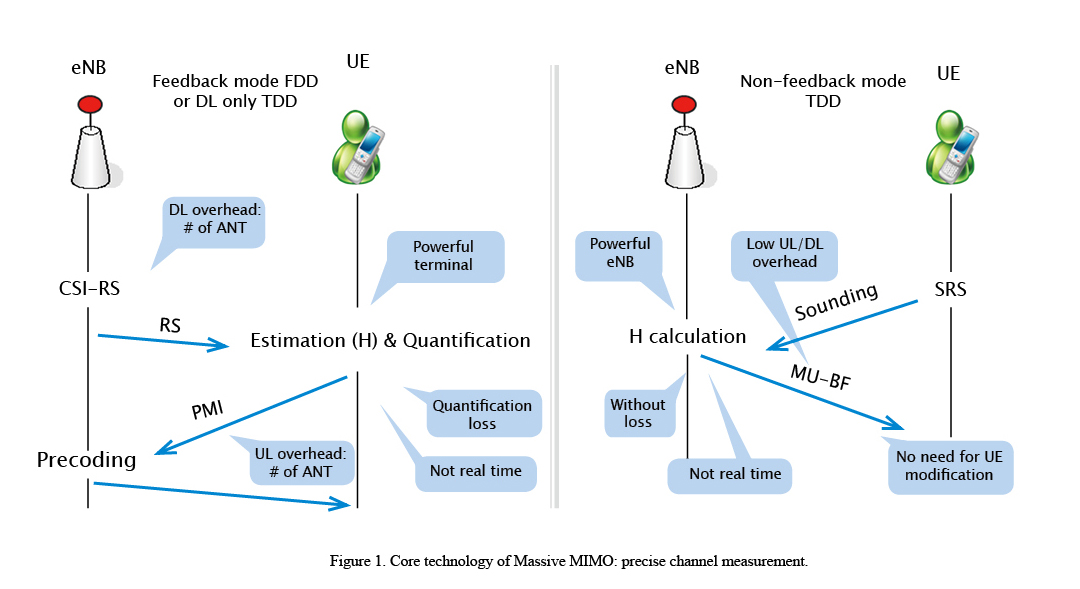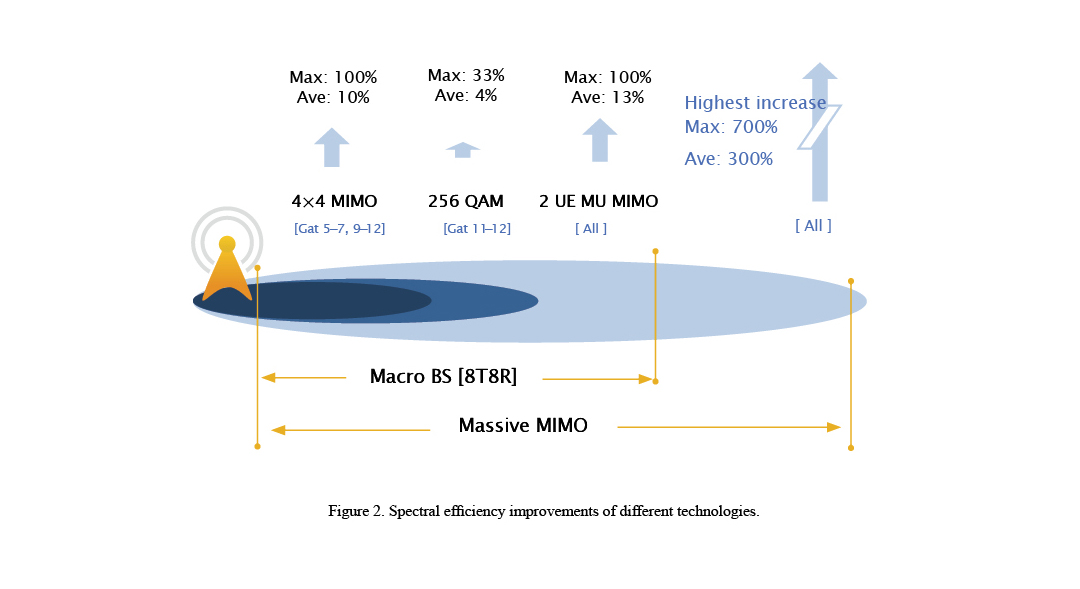Pre5G TDD: To Boost the Value of Your Network
4G networks have widespread commercial deployments. It is estimated that super-high traffic areas will account for 10 percent of the 4G sites in China’s first-tier cities by the end of this year, and the requirement for user experience cannot be met if the operator still uses the ordinary solution of increasing capacity through adding LTE frequency bands. ZTE’s Pre5G TDD solution can multiply the spectral efficiency to cope with network expansion challenges during the transition from 4G to 5G.
Huge Challenges Facing LTE in Post-4G Era
From 2017 to 2020, the development of 4G networks will present several challenges: enormous capacity demand in hot spots, improving cell-edge user experience, and 4G networks converging with the future 5G networks.
● Unbalanced network capacity distribution and big challenges from hot spots: Cisco predicts a 10-fold increase in mobile traffic from 2015 to 2020. A report on the 4G networks of Japan shows that the single-user traffic will grow at a compound annual growth rate of 40%. A statistical analysis shows that 10 percent of the 4G sites in China’s first-tier cities will be super-high traffic areas by the end of this year, and it is urgent to provide a capacity expansion solution.
● Higher single-user data rate for a single service and stable data rates from the cell center towards the cell edge: Cisco forecasts that three-fourths of the mobile data traffic will be video. Video is gradually moving from 2K (6 Mbps) to 4K HD (45 Mbps). The network should provide stable data rates for at least 2K video, and the cell-center and cell-edge users should have the same experience. However, the existing cell edge data rate is usually set at about 1 Mbps, far from meeting the development requirements of the video services.
● Convergence of 4G and the future 5G networks: How the newly-built 4G networks can be converged with the future 5G networks is a focus of operators this year.
It is expected that a large-scale commercial use of 5G networks and terminals will be achieved after 2020, and most of the challenges need to be overcome before the arrival of 5G. Table 1 summarizes the challenges posed to 4G mobile networks.
ZTE Pre5G: A Bridge to 5G
Responding to the challenges, ZTE puts forward the Pre5G TDD solution. It revolves around Giga+MBB, ultimate experience and cloud-based networks to increase the value of TDD networks.
Methods for Expanding Network-Wide Capacity
The network capacity is expanded through adding spectrum, enhancing spectral efficiency and increasing site density.
● More licensed spectrum: Before the massive commercial use of 5G networks, it is proper to effectively use TDD spectrum resources. TD-LTE is converging with FDD-LTE in terms of industry chain, and commercial chips and terminals support both TD-LTE and FDD-LTE. The candidate frequency bands for TD-LTE (B40, B41, B42, and B43) are low-frequency bands that offer high bandwidth.
● More unlicensed spectrum: The usage of unlicensed spectrum can be made more efficient by using the LWA and LAA technologies.
● Higher spectral efficiency: Among the 5G candidate technologies, only Massive MIMO can significantly enhance the spectral efficiency, and increase the peak data rate by six to eight times, making it especially suitable for transmitting video services with large packet sizes.
● More sites and smaller cells: The capacity can be improved through increasing the site density. The key solution is Pre5G UDN.
Among all the solutions mentioned above, Massive MIMO is the only one that can multiply the spectral efficiency and network capacity without consuming more spectrum resources.
Methods for Improving Single-User Rate and Cell-Edge User Experience
A good mobile user experience lies in the consistency between the available rate and the planned service rate.
● CA: Carrier aggregation (CA) is a mature technology to improve a single-user peak data rate.
● SDMA+MU-MIMO: The single-user data rate can be increased through spatial division multiplexing. Massive MIMO is the key.
● User-centric network: With CoMP, Massive MIMO, and Pre5G UDN technologies, the network can decrease interference, convert interference into a desired signal, and improve the cell-edge performance. TDD Massive MIMO and Pre5G UDN are the most important technologies for improving user experience.
Pre5G Massive MIMO: Multiplying Capacity
Pre5G Massive MIMO is one of the key technologies in the LTE network evolution. Massive MIMO, based on highly precise channel measurement and curve-fitting results, provides 3D beamforming and generates user-level ultra-narrow beams, which avoids interference among multiple user-level beams and greatly enhances system capacity.

Precise channel measurement is one of the core technologies of Massive MIMO. Fig. 1 shows a TDD-based Pre5G Massive MIMO system. The downlink channel state information can be obtained without the terminal feedback by exploiting channel reciprocity. This saves the uplink channel overhead, avoids uplink feedback information quantification loss, breaks the transmission bandwidth limits and ensures a higher precision of the obtained downlink channel information. This is also the key advantage of Pre5G TDD Massive MIMO.
With a large antenna array, Pre5G TDD Massive MIMO is capable of 3D beamforming. It can focus the energy in the direction of specific users, provides more orthogonal spatial channels and supports more spatial streams. There are higher performance gains of SDMA including six to eight times increase in the cell peak data rates.
Pre5G TDD Massive MIMO is backward compatible with the existing terminals (R8/R9 and later releases). There is no need to address the terminal penetration problem caused by the use of new technologies. It can effectively enhance user experience and network competitiveness on the whole. Fig. 2 shows a comparison of spectral efficiency improvements of different technologies.
Pre5G Massive MIMO can also improve the cell-edge data rate and provide a consistent user experience. A 4G network field test in Guangzhou, China shows that under almost the same coverage conditions, 95% of the coverage area of a Massive MIMO cell has a downlink rate higher than 6 Mbps as compared with 80% of a macro cell. Pre5G TDD Massive MIMO provides a solution to improve the continuous coverage of video service.
ZTE has started Pre5G deployment for more than 20 operators in China and other countries, such as China Mobile, Deutsche Telekom, T-Mobile, SoftBank Mobile, Korea Telecom, U Mobile (Malaysia), and Hutchison Drei Austria.
User-Centric Pre5G UDN
As the existing network become denser, there is growing coverage overlap and serious interference. To solve the problem, ZTE puts forward the Pre5G UDN solution that is centered on user experience and based on the existing network architecture. This solution densely deploys base stations in some traffic hotspots to increase the TDD capacity density per unit area and uses inter-cell interference suppression technology, which significantly improves the spectral efficiency and network capacity and ensures the consistency of user experience.
D-MIMO, the key of the Pre5G UDN solution, is based on the same principle as Massive MIMO. It distributes Massive MIMO antennas among the densely-deployed small RRUs to form D-MIMO clusters. By using the reciprocity between uplink and downlink in TDD systems, multiple cells in a cluster can achieve coherent joint transmission. A cell can properly select its neighboring cells for cooperative transmission and a UE is able to combine coherently the signals received from multiple cells while avoiding interference. In this way, the system spectral efficiency can be improved significantly. The solution divides the available frequency resources among the densely-deployed small base stations based on the principle of minimum total interference and improves cell-edge user experience. It is estimated that the average SINR will be increased by 20% and the average download speed by 15%; and thus a consistent and seamless high-speed user experience can be achieved.

Pre5G TDD Supporting Network Convergent Evolution
Based on the Cloud RAN network architecture, the Pre5G TDD solution can use a set of cloud-based networks to support 4G, Pre5G, and 5G networks by using the multi-connection technology. Together with its open service capability and flexible network architecture, the Pre5G TDD solution will create tremendous market opportunities.
Summary
Massive MIMO and Pre5G UDN, two typical Pre5G TDD technologies, aim at solving the capacity problem of 4G networks, improving the spectral efficiency by six to eight times through technology combination, and enhancing cell-edge user experience. Based on the Cloud RAN architecture, the ZTE Pre5G TDD solution is capable of smooth evolution to 5G and helps operators build high-value LTE Advanced Pro networks.